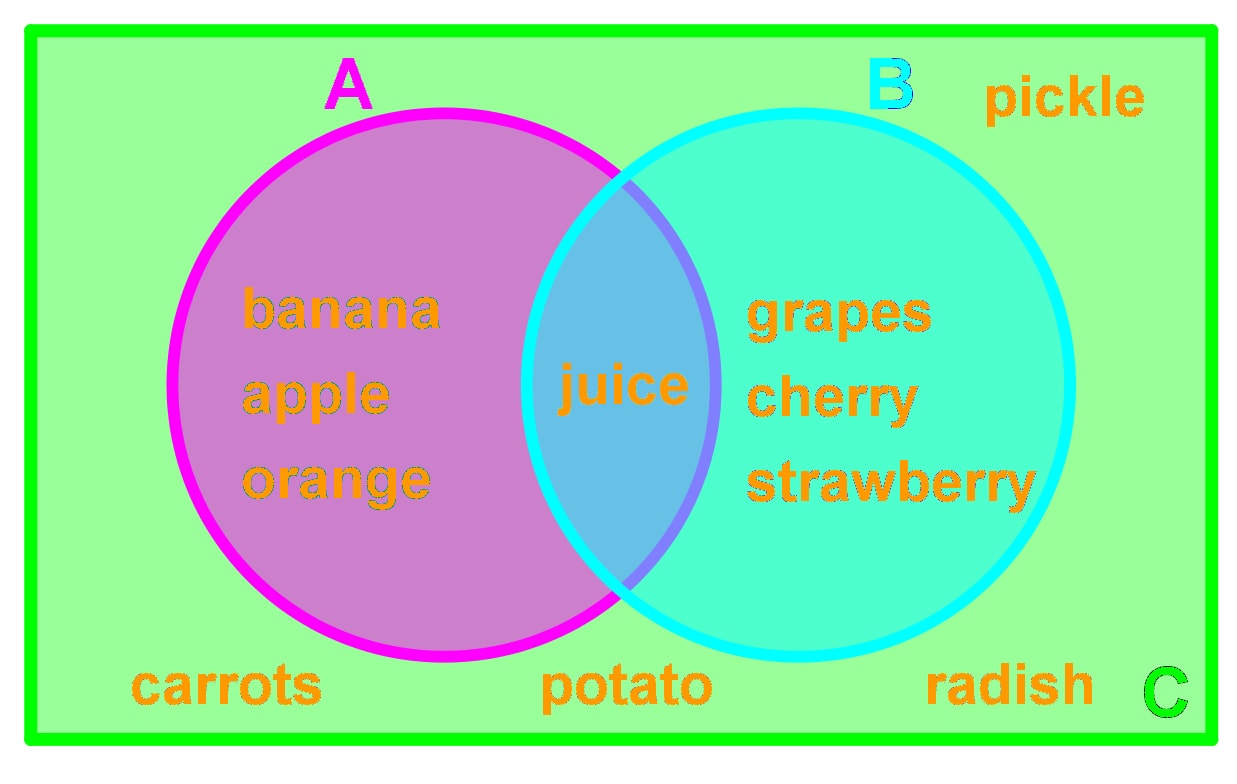In this section we will learn about intersection and union of 2 sets.
Let A and B be sets. Then, the definitions for intersection and union is the following:
Intersection: A set of elements where the elements show up both in A and B. We call this intersection AB. Sometimes people refer to the symbol as the word "and".
Union: A set of all elements that appears in A, in B, or both in A and B. We call this union AB. Sometimes people refer to the symbol as the word "or".
Here is a definition that may be useful:
A\B: The set of elements that is in A but not in B. In short, it is just A minus B.
The principle of inclusion and exclusion of 2 sets says the following:







